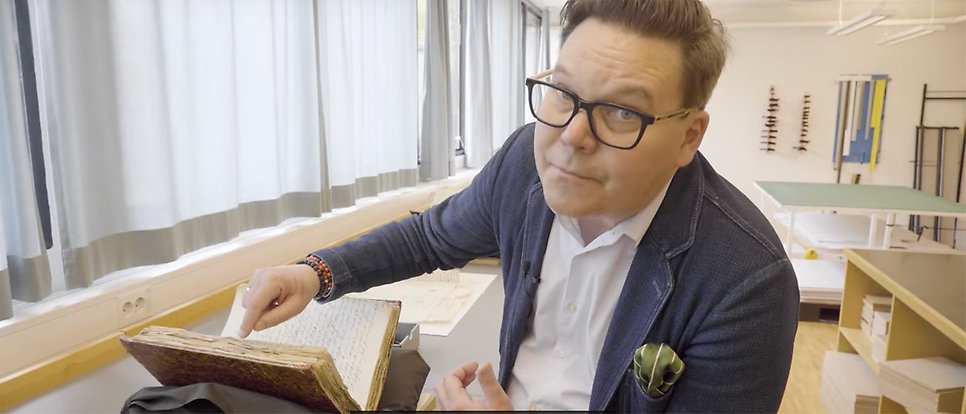Saving Gustav III’s private archive

Many researchers and others have read and browsed the red leather volumes in which the collection was bound in the 1840s and this has left its mark. Photo: Marcus Holmqvist
Immediately after the assassination of Gustav III in 1792, his private archive was transferred to Uppsala University Library. The archive, containing all the letters and documents saved by the king, has been extensively used by researchers. The manuscripts have become severely worn. The project Gustav’s Hand is designed to conserve and digitalise the archive and to make it available to everyone.
“This archive is a real treasure for 18th century research. It is a true gem. The term "one of a kind" should not be used lightly, but this archive is one of a kind,” says Mikael Alm Professor of history and project manager for Gustav’s Hand.
Many researchers and others have read and browsed the red leather volumes in which the collection was bound in the 1840s and this has left its mark.
“It was in very poor condition when we started the project. In fact, a significant proportion of the collection has been inaccessible. Digitisation, on one hand, is about making the collection more accessible by making it accessible via computer. Furthermore, to ensure that the collection is used sustainably in the future where it is not worn out as before by looking at digital imagery instead of the objects themselves,” Alm says.
In the film, he tells us more about the archive and how the work of preserving and digitising it is done. Craftsmanship and the latest technologies, such as machine learning, are used.
Åsa Malmberg and Marcus Holmqvist
